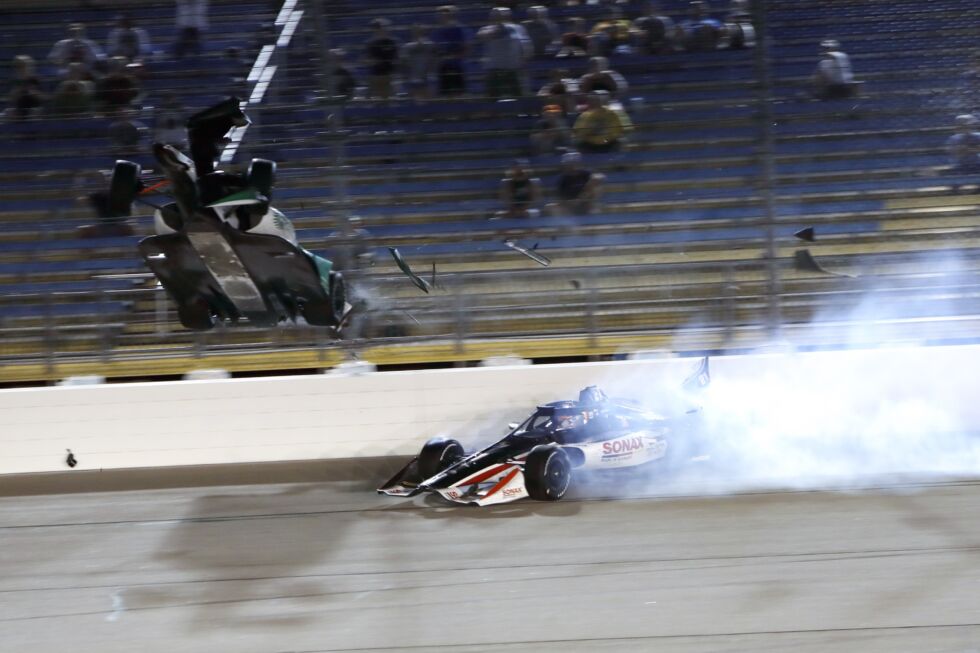IndyCar’s Aeroscreen gets first real test, saves lives at Iowa race

Colton Herta (L) flies over the top of Rinus VeeKay (R) after a potentially nasty crash at Iowa Speedway. [credit: Chris Jones/IndyCar ]
The biggest change to IndyCar in 2020, other than a coronavirus-altered schedule, has been the addition of the new driver-protecting Aeroscreen to each of the race cars. On Friday night at Iowa Speedway, the Aeroscreen got its first real tests in a pair of potentially horrible crashes; happily, the new safety feature passed with flying colors.
The Aeroscreen was developed last year for IndyCar by Red Bull Advanced Technologies. The engineering consultancy of the championship-winning Formula 1 team originally proposed something similar for F1 in 2016, but that was rejected in favor of the Halo device-the bit that looks like a flip-flop strap-that we've seen on other open-wheel, open-cockpit race cars over the past few years.
The Aeroscreen refines the two ideas. There's a titanium frame made by Pankl, bonded into the carbon-fiber monocoque around the car's cockpit, that weighs 28.7lbs (13kg) and can withstand a load of 34,000lbs (15,422kg). This is enveloped by a laminated polycarbonate ballistic windscreen made by PPG that weighs 17.3lbs (7.8kg), capable of withstanding the hit from a 2lb (0.9kg) object traveling at 220mph (354kmh).
Read 6 remaining paragraphs | Comments